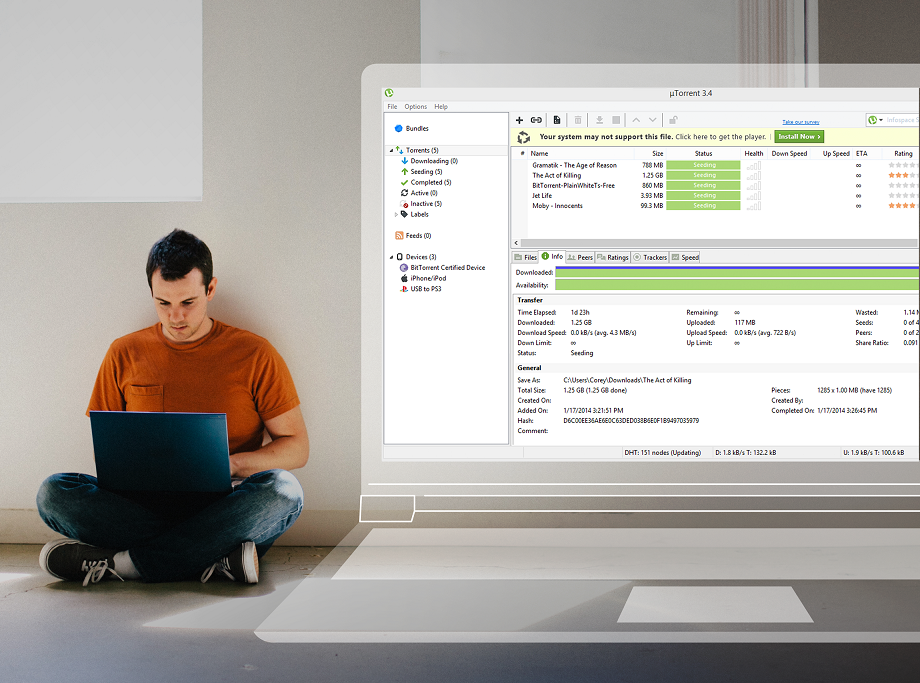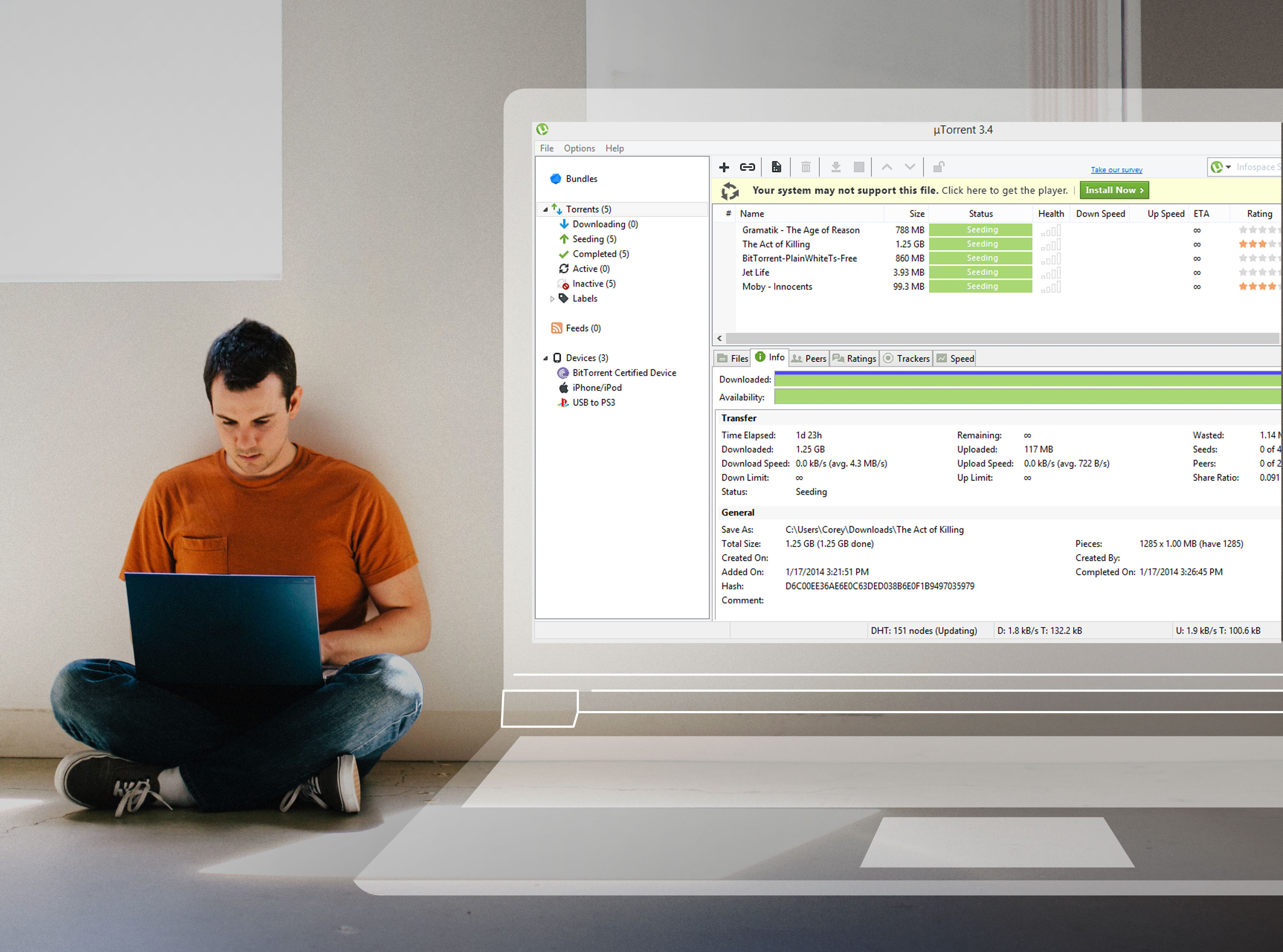Our flagship torrent clients, uTorrent and BitTorrent, do many different things in the course of downloading content onto your computer faster than what’s physically possible with other protocols. There is a lot of functionality going on under the hood in the course of a download, which fall into three broad categories: networking, disk IO and user interface. We have written before about enhancements in the first two categories (uTP, DHT and multithreaded disk IO, for instance) and are now pleased to announce new improvements in how the user interface interacts with the rest of the system.
In addition to requesting and sharing pieces of files on the network and assembling them on disk, the client needs to convey these activities to the user by showing them on the screen. The logic which displays this information often interacted with the rest of the program in a coarse and intrusive way, requiring networking and/or disk IO to briefly halt while the information was gathered. For example, while viewing the list of files contained in a torrent and their relative download progress, the networking subsystem would be halted several times a second. However brief these pauses were, when multiplied by several UI elements and possibly large lists of torrents and their files, it was enough to slow overall performance.
As an analogy, consider a car’s speedometer as the user interface and the engine, transmission and wheels as the core subsystem doing the work. If the engine had to pause several times a second to update the state of the speedometer, performance would suffer.
To avoid these pauses, the layer between the UI and the rest of the system was made richer and less synchronous. Instead of pausing the subsystem to interrogate values, the UI first conveys broadly what it is interested in (which tab is visible, which torrent is selected), and the subsystem then asynchronously presents only the updated information relative to that state. The user interface layer is then free to present this information without holding up the other layers.
This is an exciting update for us to issue, as the entire engineering team is constantly refining products to try and provide the best user experience.
There’s always more to come on this front, so do stay tuned!


